All products featured are independently chosen by us. However, SoundGuys may receive a commission on orders placed through its retail links. See our ethics statement.
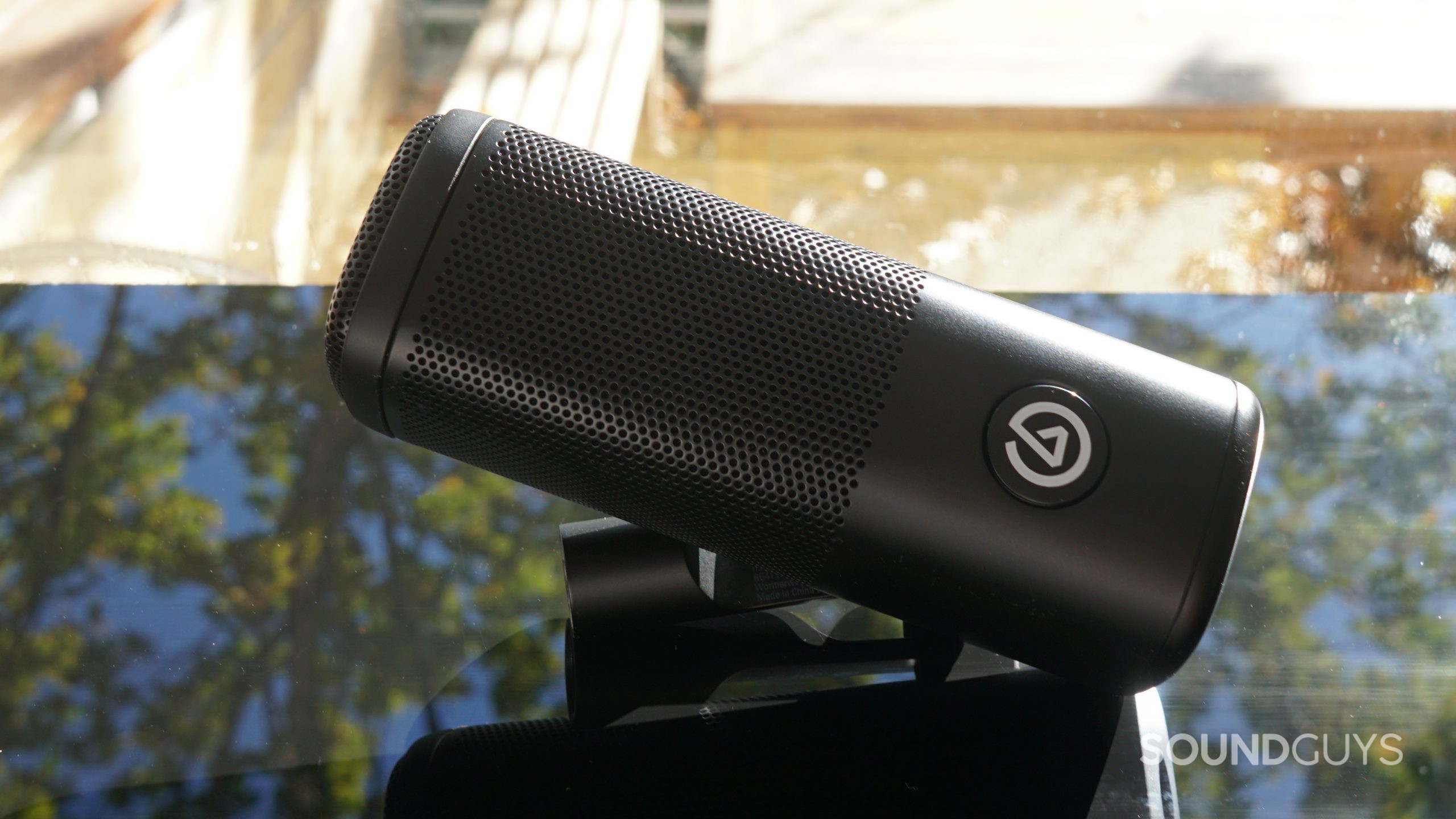
Elgato Wave DX review
Published onNovember 18, 2022
Elgato Wave DX
Hot on the heels of seemingly the whole live streaming community jumping to the Shure SM7B, streaming hardware and gaming peripheral companies have started putting out XLR microphones. Next up is Elgato with the Wave DX microphone, a straightforwardly good XLR microphone marketed with plenty of expensive additions, most notably the Wave XLR audio interface.
Let’s see if the Elgato Wave DX can hang with the big dogs, and if those bundled extras are worth it.
Editor’s note: This review was updated on November 18, 2022 to include a mention of the HyperX ProCast in the alternative recommendations.
Streamers and podcasters will appreciate the Elgato Wave DX for its reasonable price and nice sound. If you already have an audio interface, this is a cheap option to slot into an existing setup. If you’re just starting and have cash to burn, getting the whole Elgato kit makes for a very simple setup process.
What’s it like to use the Elgato Wave DX?
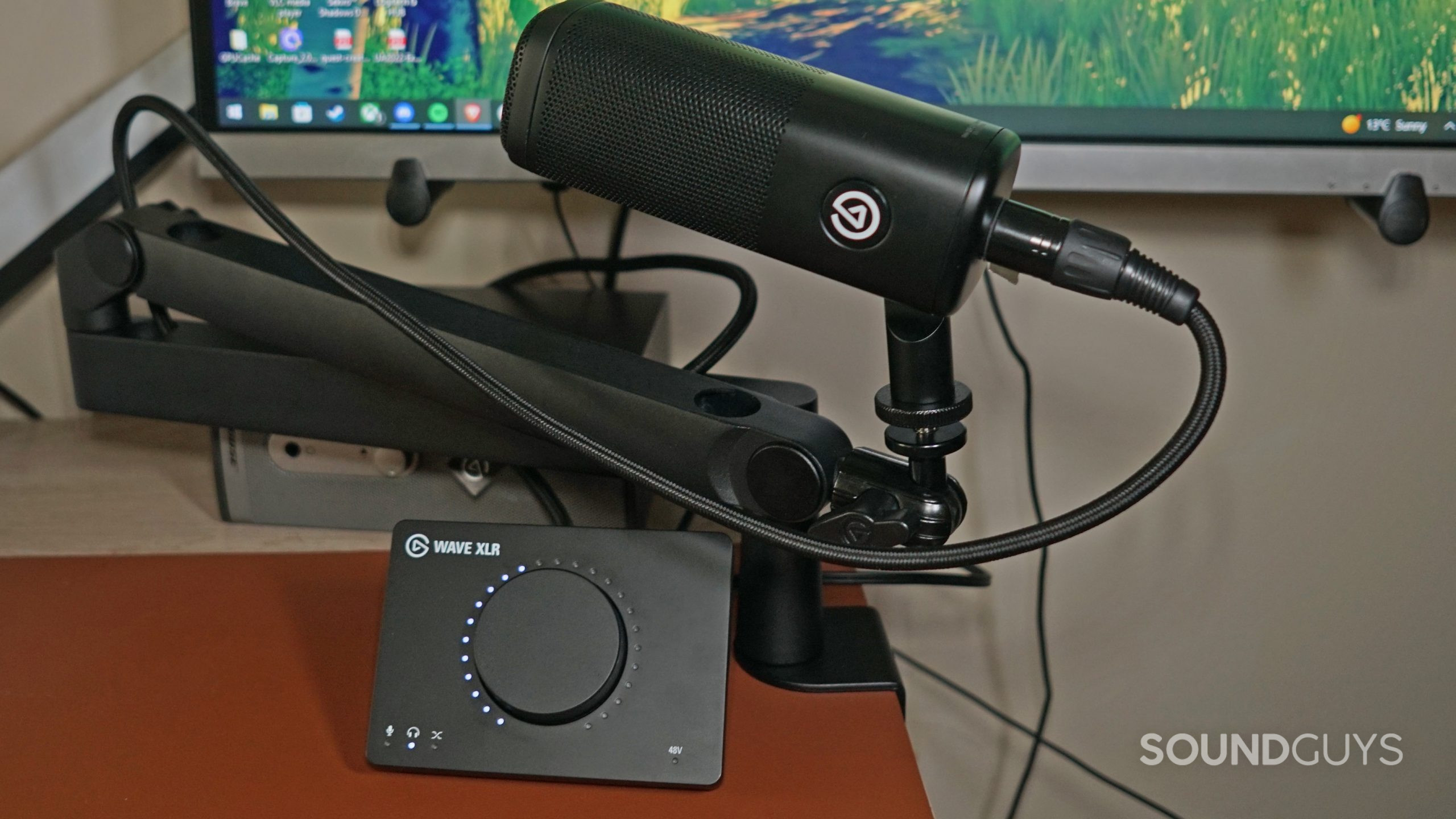
The Elgato Wave DX is an XLR microphone meant for streamers, podcasters, or Youtubers looking to level up from the USB microphones that have typified online creator workspaces for years. It’s an extremely simple product. There aren’t any onboard controls to speak of—just point the tip of this dynamic microphone at your mouth and start talking. The Wave DX sports a cardioid polar pattern, so it primarily picks up sound in front of the microphone.
Other than knowing where to point it, there’s not much to the microphone. The Wave DX comes attached to a removable mount, which you affix to either side of the microphone (that white Elgato logo is removable, and hides the screw hole). The mount itself sports a 5/8-inch thread, and the mic comes with a reversible adapter to convert that to either a 3/8-inch or 1/4-inch thread, so you can attach it to pretty much any standard mic stand.
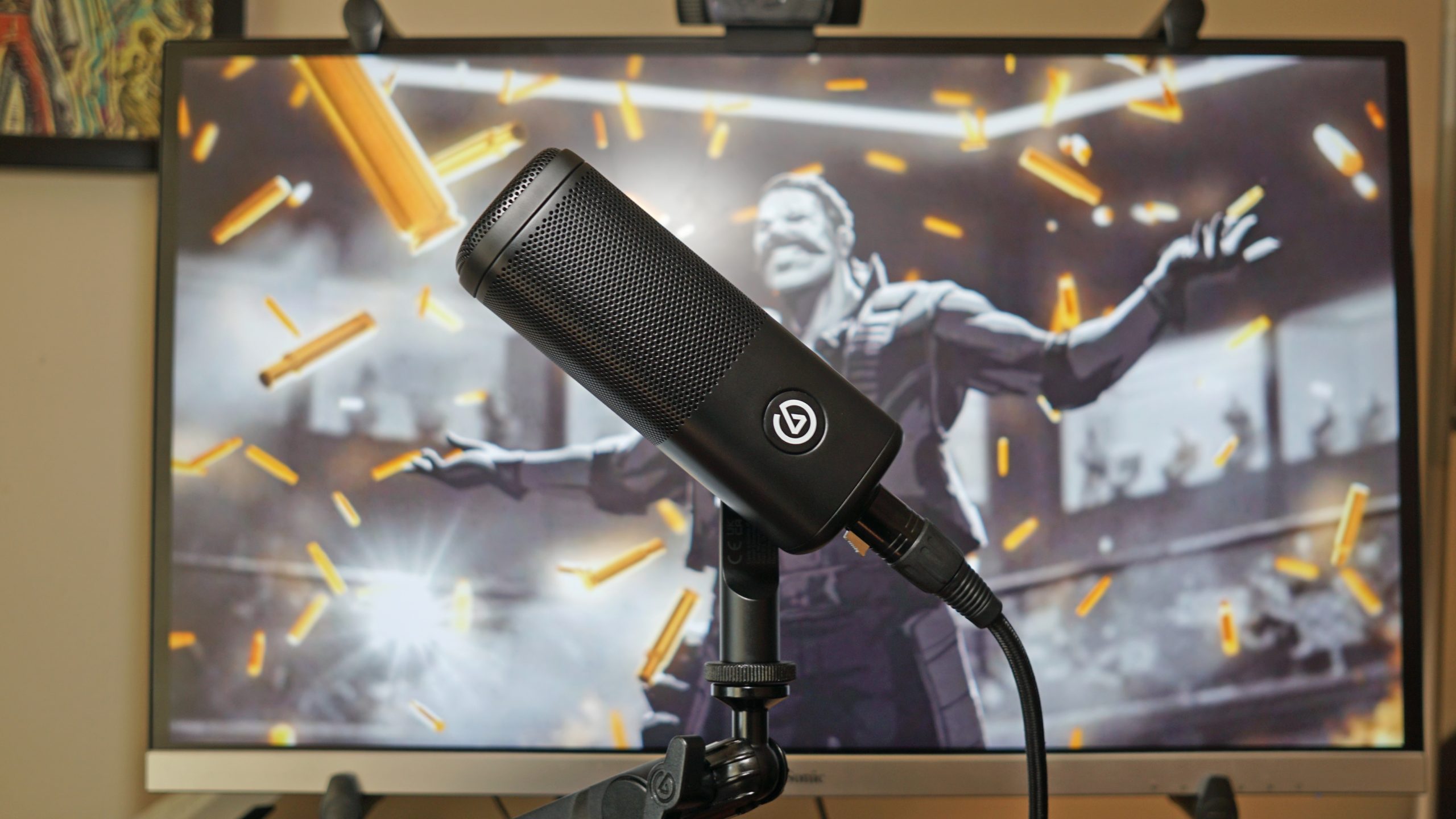
However, while the microphone itself is a pretty barebones product, Elgato is pitching it as a part of a larger broadcasting bundle, including a microphone arm, Elgato-branded XLR cable, and the new Elgato Wave XLR audio interface. We’ll cover the Wave XLR in a bit, as there’s a decent amount to cover, but the other stuff is a little quicker to discuss—you don’t really need them. The XLR cable runs for a reasonable $19.99 USD and it’s braided, which is a nice touch, but it’s still just a balanced XLR cable—they’re easy to find cheaply. Whether from Elgato or another vendor, you will need to buy an XLR cable, as the Wave DX doesn’t include one.
The Elgato low-profile microphone arm (the cheaper of the two arm options) is notably more expensive than average at $99 USD, and it features magnetic plates you can remove to have the XLR cable run through the arm. However, running a cable through the arm can limit its movement a little, since the cable can bind at the middle joint. This happens quite a bit with the braided Elgato cable, which can catch on the metal plates and pop them off depending on how you move the stand. Given these issues, it doesn’t feel worth it to shell out for the Elgato arm. Since the mic has standard threading, you can use any other mic stand you have lying around, or find one cheaper.
Should you buy the Elgato Wave XLR?
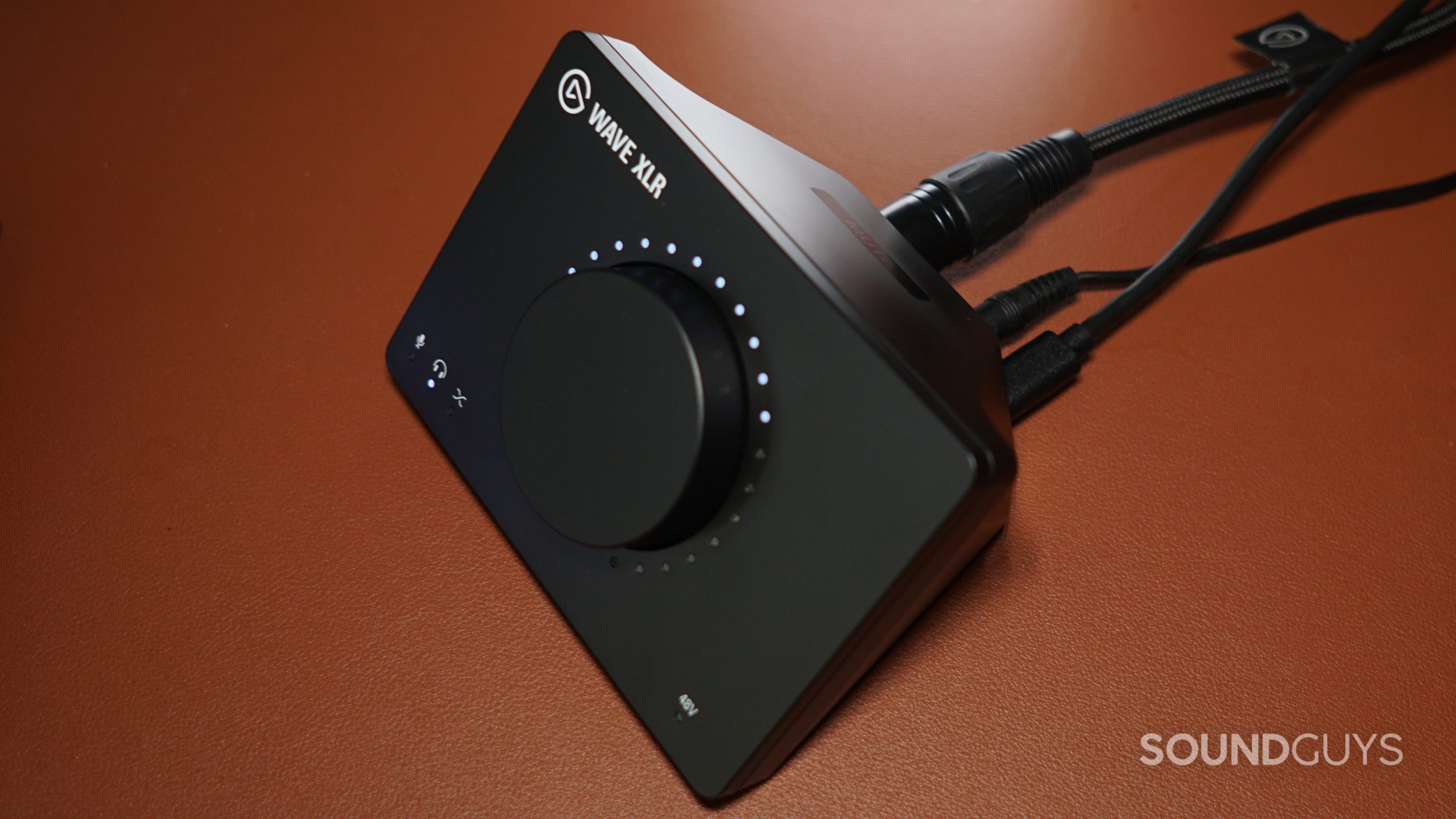
The Elgato Wave XLR is more than twice the price of the Elgato Wave DX, which makes sense in a way. This little unit is where all the controls and additional features live. If you already own an audio interface like a Focusrite Scarlett 2i2, the hardware of the Wave XLR won’t be terribly exciting. Elgato’s audio interface features a single XLR input, a single 3.5mm output, and a USB-C port for connecting to a PC.
The unit’s sloped back is touch sensitive, and tapping it will mute the microphone. On the front, there’s a large lone dial for control input and output volume, as well as the mix between mic and PC volume. The dial also functions as a button—pressing it will cycle between the volume options, and holding it down will toggle 48V phantom power. The Wave DX doesn’t need phantom power, but it’s still nice to have in case you have a condenser microphone to plug into this.
While the hardware is pretty simple, the Elgato Wave XLR also offers various options through its integration with Elgato Wave Link, the company’s audio companion App.
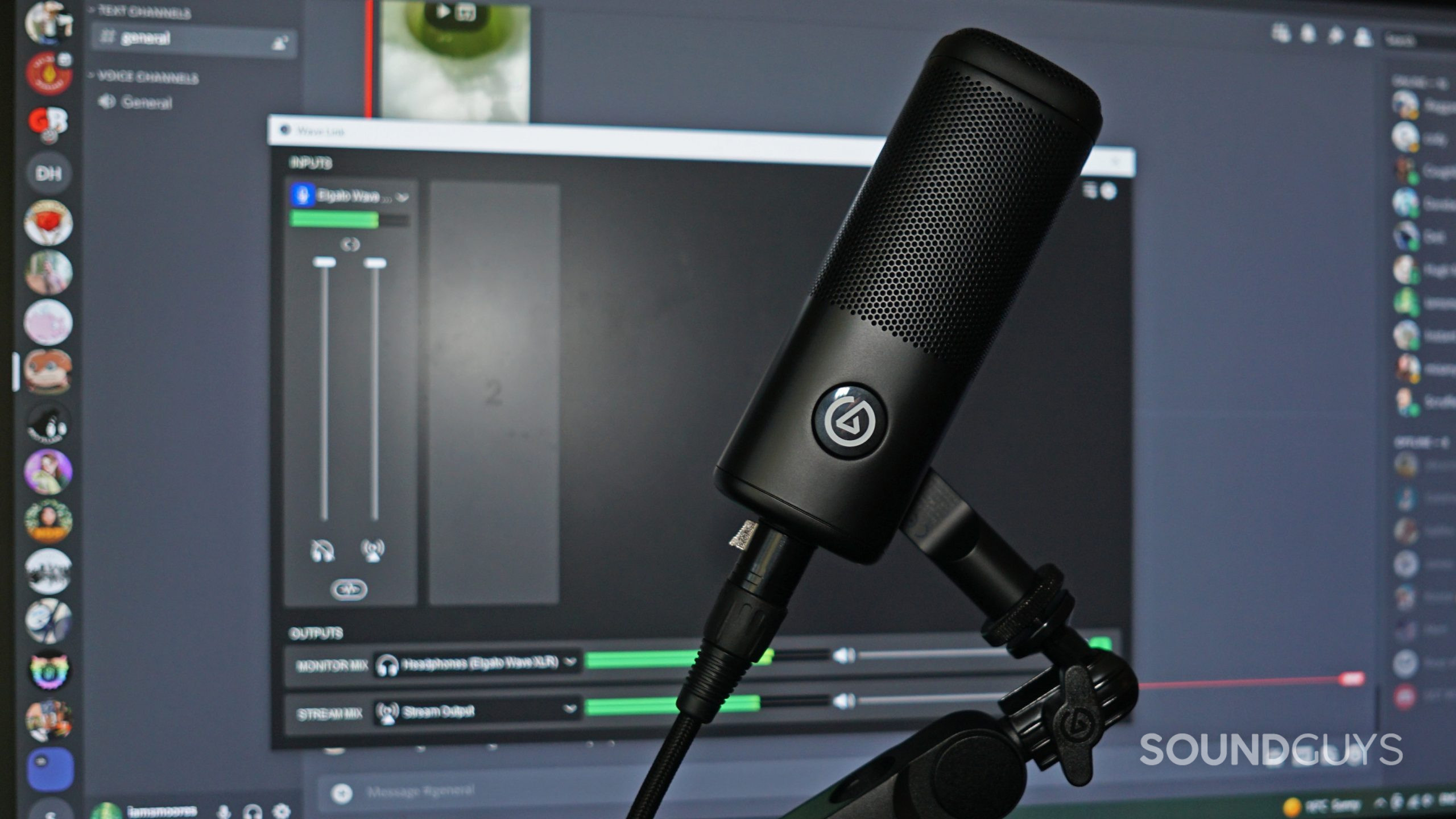
You should only install Wave Link if you buy the Elgato Wave XLR audio interface—the Wave DX on its own can’t use the software. Wave Link is a pretty straightforward, broadcast-oriented piece of software. It lets you manage many different digital audio sources, as well as hardware-derived ones. Plugging the Wave XLR into your PC adds a wide variety of audio channels. After determining what program’s audio will play through what channel, you can manage all the levels independently and output it as a single, unified audio source using Wave Link. This is great if you’re a streamer using something like OBS for your broadcasts, and it’s a more user-friendly design than free software like VoiceMeeter.
In addition to the broadcast features, Wave Link brings features tailored more to the needs of the Wave XLR in particular, too. You can toggle the Clipguard feature, which we liked when reviewing the Elgato Wave:3 microphone, and add either 80Hz or 120Hz lowcut filtering. Elgato Wave Link also lets you download audio effects plugins from its website, including EQ customization, noise gating and suppression, as well as more outlandish vocal filters, all of which you can apply to individual audio channels—that way, your mic audio can sound different, without affecting the channel outputting, say, a Youtube video.
How does the Elgato Wave DX connect?
The Elgato Wave DX is an XLR microphone, so it connects to your audio interface that way. That’s the only port on the mic, so there’s no other way to use it. Using the Elgato Wave XLR with the Wave DX, you can plug it into your PC using the included USB cable.
How does the Elgato Wave DX sound?
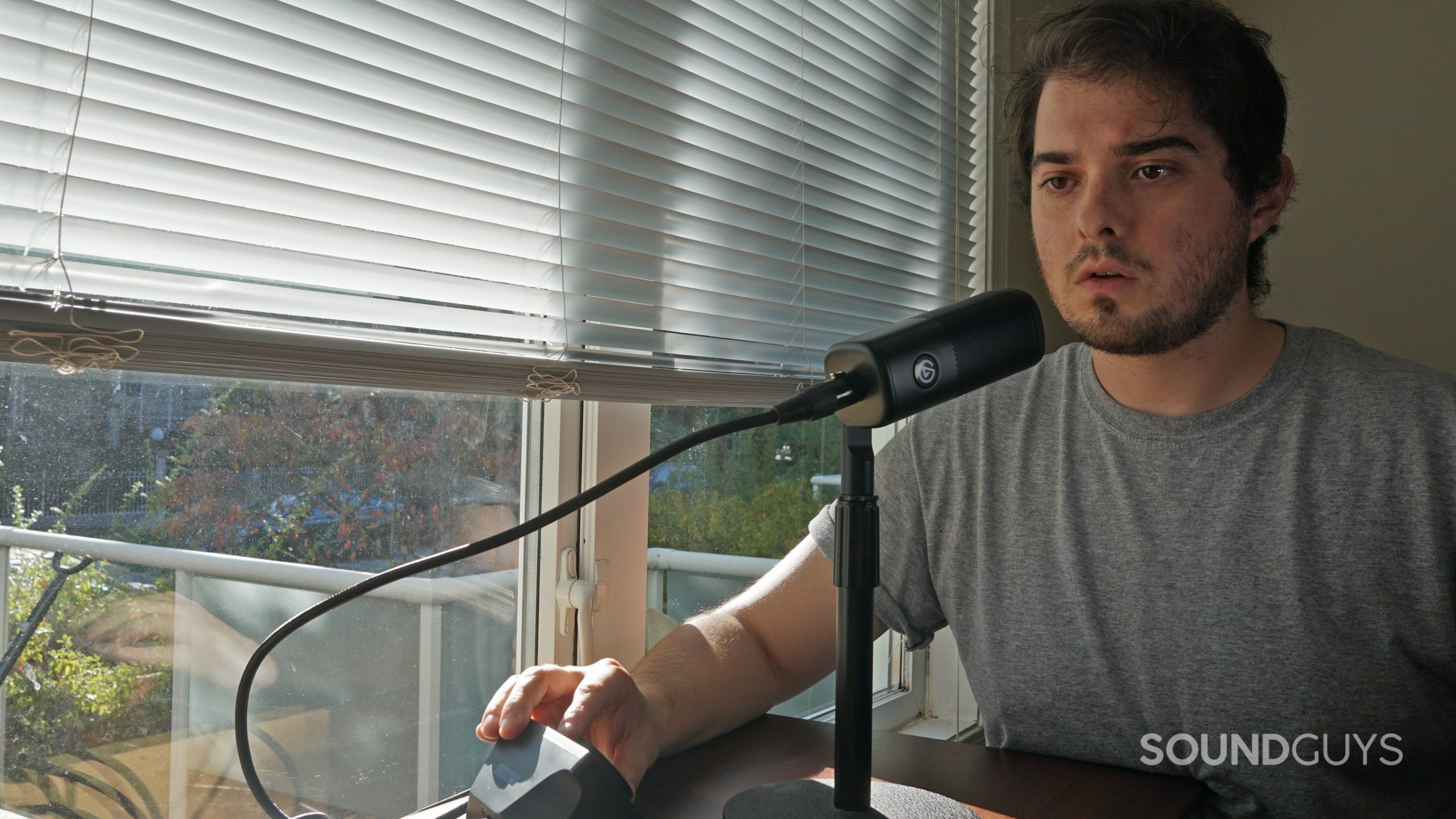
The Elgato Wave DX sounds quite nice for a $99 USD microphone. Plugged into the Elgato Wave XLR, there’s some apparent filtering that’s turned on by default, which anyone who prefers to handle their own audio mix will likely want to turn off. However, for broadcasting, where you just need something that will stay consistent, automatic filtering like this can be pretty handy.
Elgato Wave DX microphone sample (Clipguard):
Elgato Wave DX Microphone sample (lowcut filtering):
Despite being a cardioid microphone, the Wave DX does a pretty poor job of rejecting off-axis noise. If you want to remove typing sounds or other noises in the room, you’ll likely need to install a noise-gating plugin for Wave Link, or try to stick to an especially quiet room. Per its marketing materials, Elgato designed the Wave XLR unit to improve on the lack of sensitivity of dynamic microphones relative to condenser microphones, so by default, it’s quite sensitive, and you’ll need to work around that.
Room sound issues are admittedly more of a problem for at-home workers than anyone working in a broadcast or recording environment. However, given the Wave DX’s price, and how many professionals spend all day on Zoom calls these days, it’s still worth discussing. That added sensitivity will pick up speaker audio output too, so remember to wear some headphones!
Elgato Wave DX microphone sample (keystrokes):
Elgato Wave DX microphone sample (room sounds):
Of course, you don’t have to use the Elgato Wave XLR with this microphone—it’s a regular XLR mic, after all. Plugged into a Focusrite Scarlett 2i2, at approximately the same volume position, my voice sounds a little bit bassier and maybe a little bit quieter. Maybe it’s a matter of personal taste, but I like it better with the Scarlett.
Elgato Wave DX microphone sample (w/ Focusrite Scarlett 2i2):
How does the microphone sound to you?
Should you buy the Elgato Wave DX?
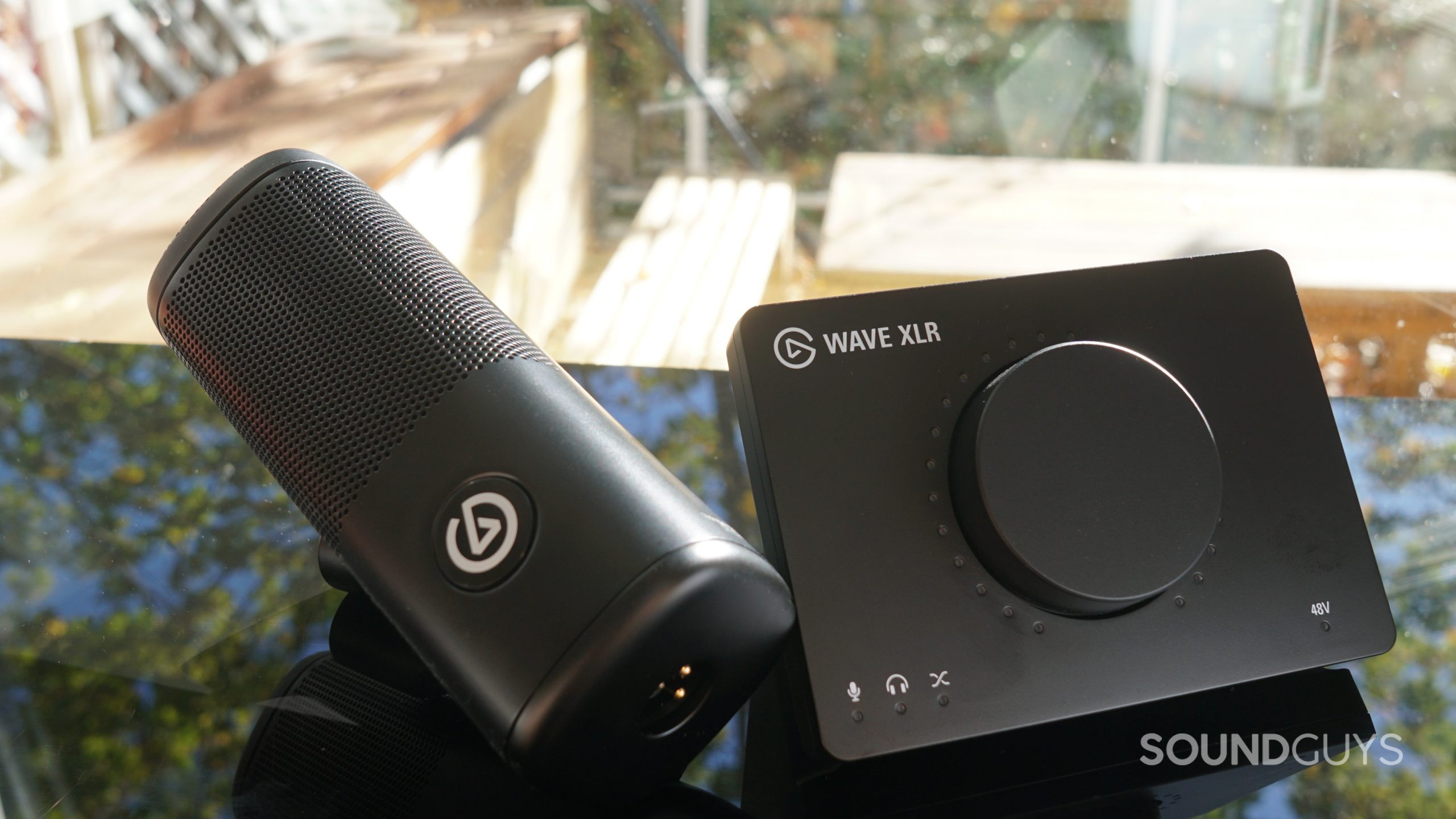
If you’re on the hunt for a reasonably priced XLR microphone with good sound, the Elgato Wave DX is a great option to look out for. At $99 USD, it’s pretty barebones, but most standalone analog microphones are, and they tend to run much higher in price. The value proposition for the other parts of the bundle we looked at isn’t quite so clear, though.

Both the Elgato Wave XLR and Elgato mic arm work well, but they’re a little more expensive than average and don’t really justify it. The Wave XLR is a handy little unit, and it’s very easy to use, but the Wave Link software is where most of its features reside. If you’re not a live streamer, I doubt you’ll have much use for a lot of what Wave Link does. If you’ve already got an audio interface, or getting a less brand-consistent option isn’t a big deal, it’s easy to skip the Wave XLR.
However, if you’re starting to build a streaming setup, it’s worth pointing out how the price stacks up to competitors. The microphone and audio interface will run you $100 USD less than something like the Logitech Blue Sona, and hundreds less than something like the Shure SM7b. It’s not hard to spend a ton of money setting up a nice audio situation for your burgeoning Twitch community, but the Elgato Wave DX bundled with the Wave XLR is a relatively reasonably priced place to start.

What should you get instead of the Elgato Wave DX?
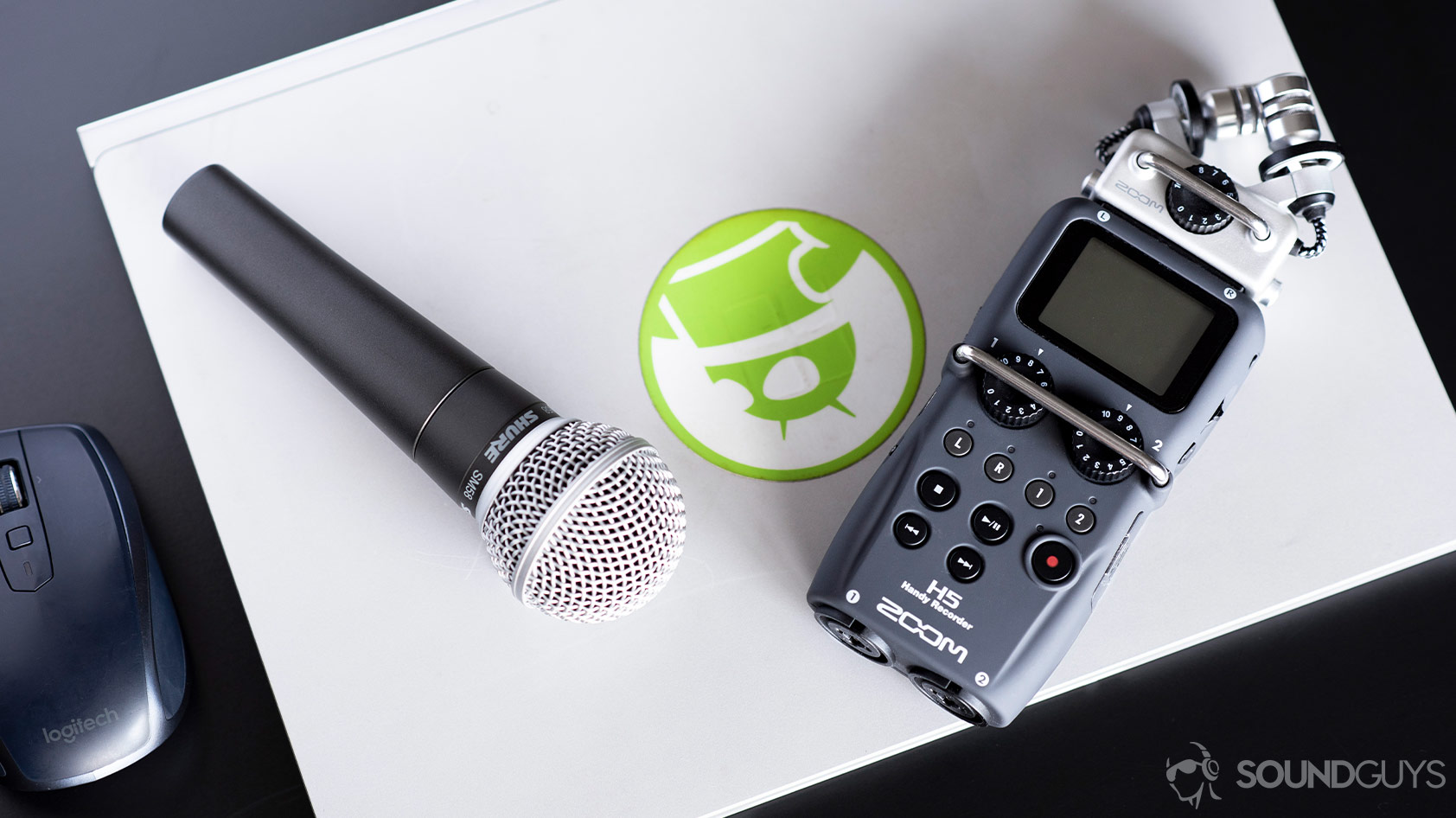
XLR microphones can land in a pretty wide price range, but there are still a few very reasonable workhorses to consider. For starters, the Shure SM58 may not look like your typical streamer microphone, but it will surely look familiar. This silver-tipped microphone has been one the standard picks for performing artists, emcees, and anyone who wants their voice to come out of speakers live or later. It sounds good, it’s durable, and it’s $99 at Amazon.
If you want something a little more stationary, the Audio-Technica AT2020 is also $99 at Amazon. This condenser microphone features a more desktop-oriented design, with its own built-in mount (and its own XLR cable). This mic will work well for recording voices and acoustic instruments, making for a versatile option for various uses.
If you’ve already got a streaming setup and you want something a little more sensitive for your desktop needs, the HyperX ProCast will fit in with your other gaming accessories nicely. It’s considerably more expensive than the Wave DX though, running for $179 at Amazon.
Frequently asked questions
No! Elgato has a bundle builder feature in its web store. While buying the Elgato Wave DX and Wave XLR together (as well as a stand and XLR cable) will net you a decently sized discount overall, you can still buy everything piecemeal if you’d prefer.
The Elgato Wave DX microphone features an internal pop filter, much like the HyperX QuadCast microphones, but it doesn’t come with any sort of detachable screen. If the mic’s wind performance isn’t sufficient for your needs, you’ll need to find a windscreen that works on your own—Elgato doesn’t sell one for the Wave DX.